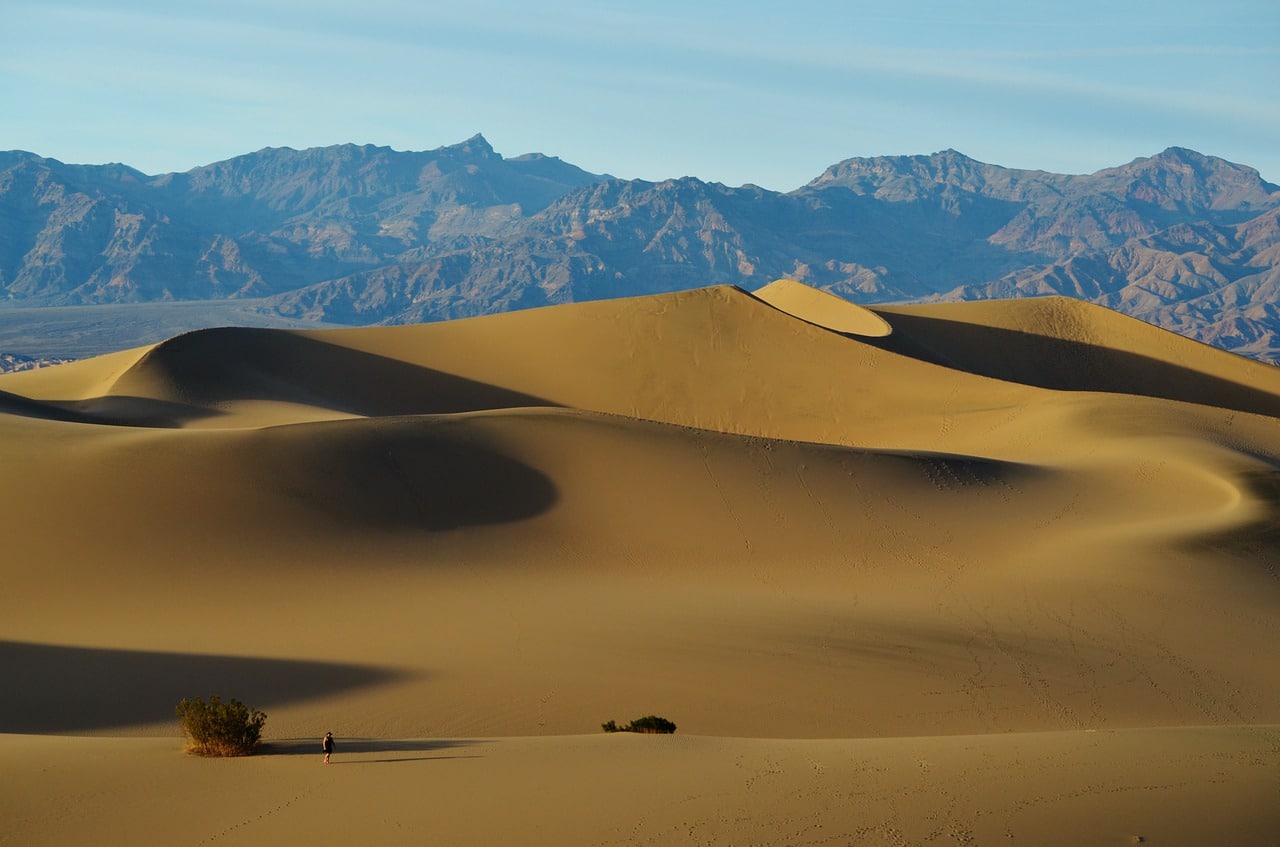
Article Summary: Historic Sites In Nevada
Historic Sites In Nevada. More Than Just Parks has 10 incredible must-see sites for you to visit.
I’ve been to so many of these amazing places since retiring from teaching in 2018. Did I mention that I taught history? I spent a lifetime teaching about the history behind these momentous sites. Then I got to see them firsthand. And now I’m sharing the stories of these incredible places with you. It doesn’t get any better than that!
I taught history for over a quarter of a century. Now I enjoy researching and writing these articles for More Than Just Parks.
I’m going to give you my list of the Top 10 Historic Sites in Nevada that you’ll want to see. We’ve got fascinating exhibits, famous figures, historic parks, legendary trails and so much more.
Top 10 Historic Sites In Nevada
10. Ward Charcoal Ovens
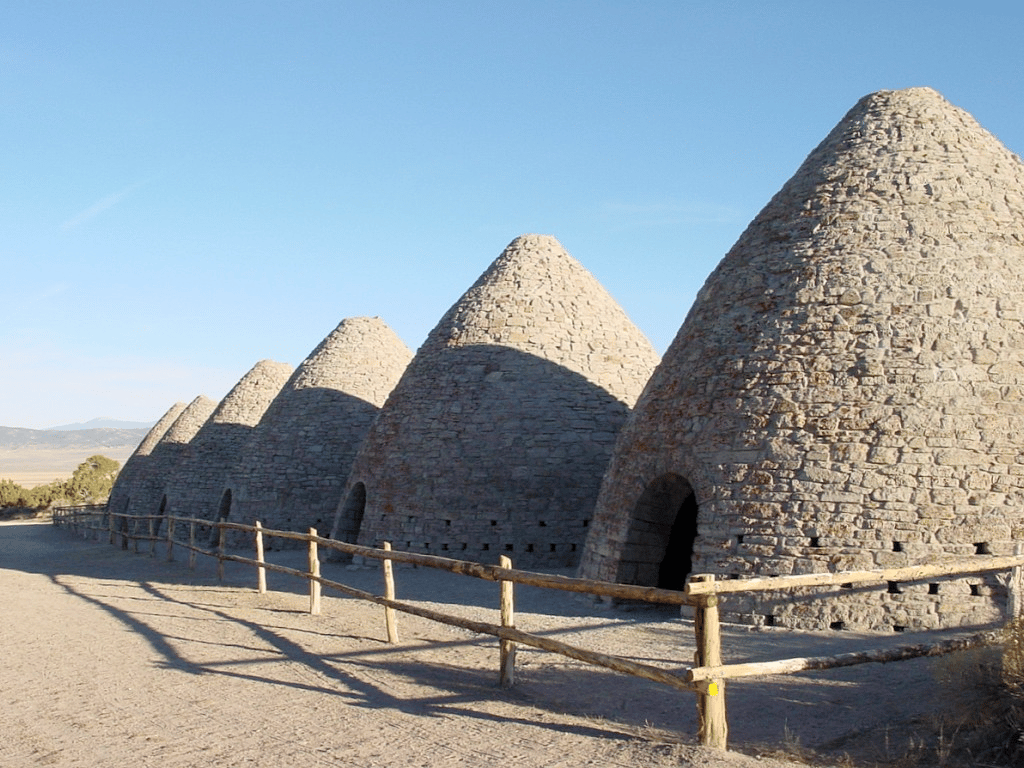
Nevada is known for its desert landscapes, large casinos, and vibrant nightlife. The Silver State is also home to a variety of natural wonders, including the Valley of Fire State Park, Lake Tahoe, as well as prominent gold and silver mines. Nevada is a state with a rich history and diverse culture.
It’s also home to some amazing historic sites which More Than Just Parks is thrilled to share with you. We’re giving you our Top 10 List Of The Best Historic Sites In Nevada.
And we’re kicking it off at #10 with the Ward Charcoal Ovens.
A visit to Ward Charcoal Ovens State Historic Park is truly an adventure. It’s a state park located in White Pine County, Nevada. The park is named after the six beehive-shaped charcoal ovens that were built in the late 19th century to support the mining industry in the area.
A Short History Of The Site
The charcoal ovens were built in the 1870s by the Ward Mining Company to produce charcoal, which was used to fuel the smelting process in the nearby mines. The ovens were constructed of limestone and were designed to burn wood at high temperatures to create charcoal. The process took about a week and required constant maintenance.
The charcoal industry in the area declined in the late 19th century due to the availability of cheaper fuel sources such as coal, and the ovens were abandoned. The site was later used as a sheep camp and for cattle grazing.
In the 1960s, the State of Nevada acquired the site and turned it into a state park. The park was opened to the public in 1978, and the ovens were restored to their original condition.
Today, Ward Charcoal Ovens State Historic Park is a popular tourist destination, and visitors can explore the ovens and learn about the history of the charcoal industry in Nevada.
The park offers picnic areas, hiking trails, and ranger-led tours. It also provides a glimpse into the life of the people who lived and worked in the area during the boom years of Nevada’s mining history.
9. Stokes Castle
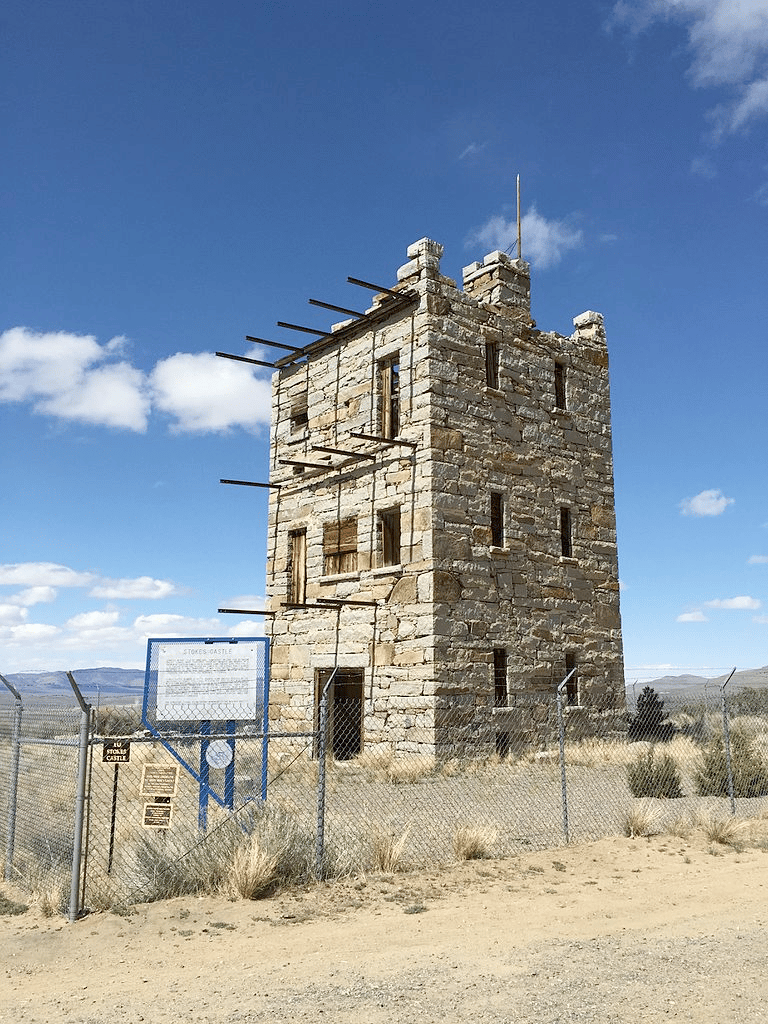
Imagine a castle in the middle of the desert. Actually, you don’t have to imagine it. Our next historic site just happens to be one. At #9 on our list of the Best Historic Sites In Nevada is Stokes Castle.
Stokes Castle is located in Austin, Nevada. It was built in the late 19th century by Anson Phelps Stokes, a wealthy businessman and philanthropist from New York City, as a summer home for his family.
The castle is located on a hillside on the western edge of town, overlooking the Reese River Valley, and was built using locally quarried sandstone.
The castle was designed in the style of a medieval tower and was intended to be a symbol of the wealth and power of the Stokes family.
However, despite its grandeur, the castle was only occupied for a total of one month, as the Stokes family found the location too remote and isolated for their tastes. The castle was never finished and left to the elements.
An Iconic Symbol Of Austin’s Past
Despite its brief period of occupation, Stokes Castle has become an iconic symbol of Austin’s past as a silver mining town and is considered one of the most famous of many must-see historic sites along the Loneliest Road in America.
The castle is now owned and managed by the Bureau of Land Management and is open to the public for visitation, providing a glimpse into the history of the area, and the life of the wealthy mining barons of the 19th century.
Visitors can take guided tours of the castle and learn about its history and architecture, as well as enjoy the beautiful views of the Reese River Valley.

8. Nevada State Capitol
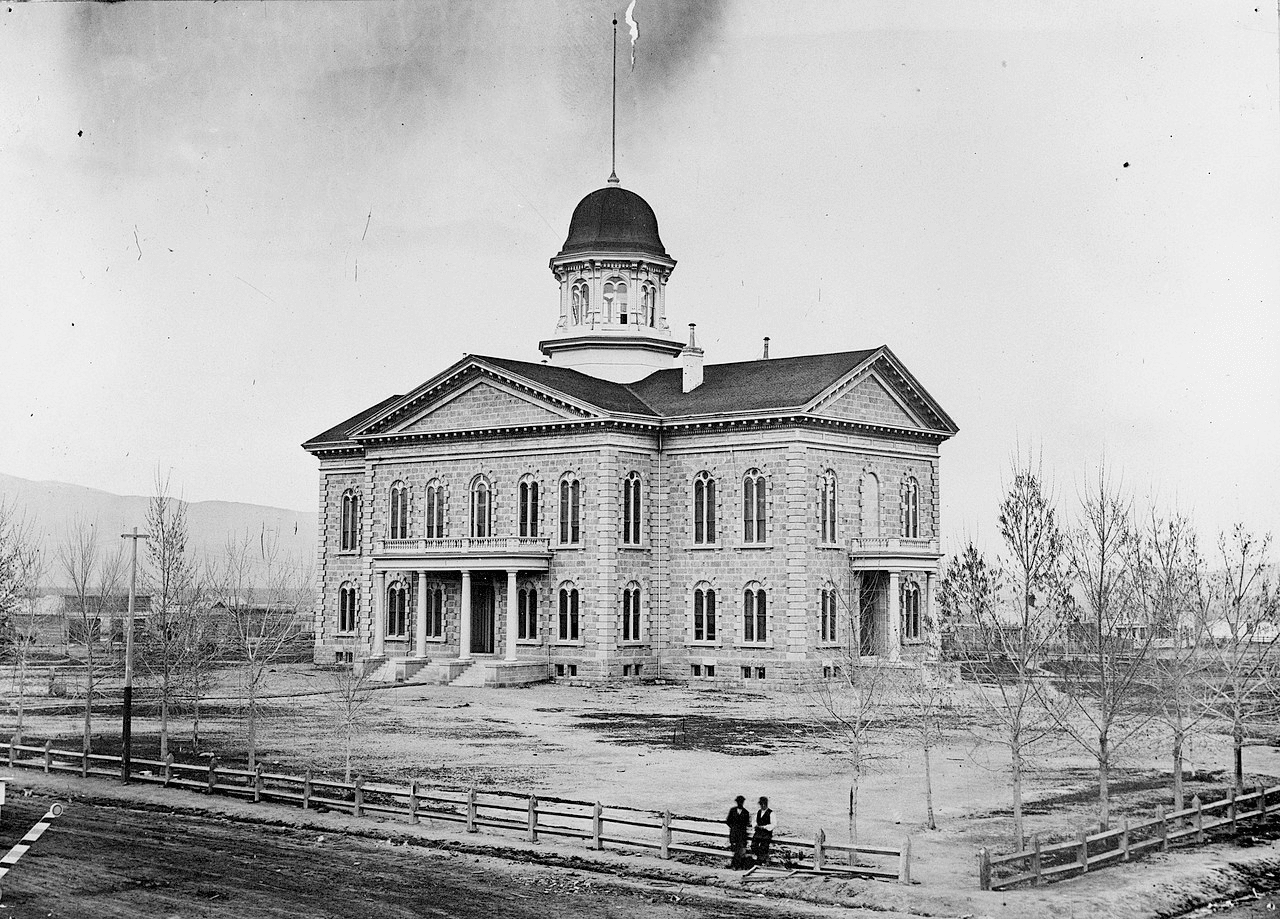
For our next historic site, you’ll have a blast with Nevada’s past. At #8 on our list of the Best Historic Sites In Nevada is the Nevada State Capitol. Actually, it’s the former Nevada State Capitol.
It was built in the 19th century and served as the state capitol from 1871 to 1885.
The building is of Victorian architecture and is made of sandstone. It is a two-story, rectangular building with a central dome and a portico entrance. It features a mix of Italianate, Second Empire, and Gothic Revival architectural styles.
The building now serves as a museum and is open to the public for tours, showcasing the history of Nevada’s state government and the state’s role in the American Civil War.
It’s considered as a National Historic Landmark.
7. Lovelock Cave
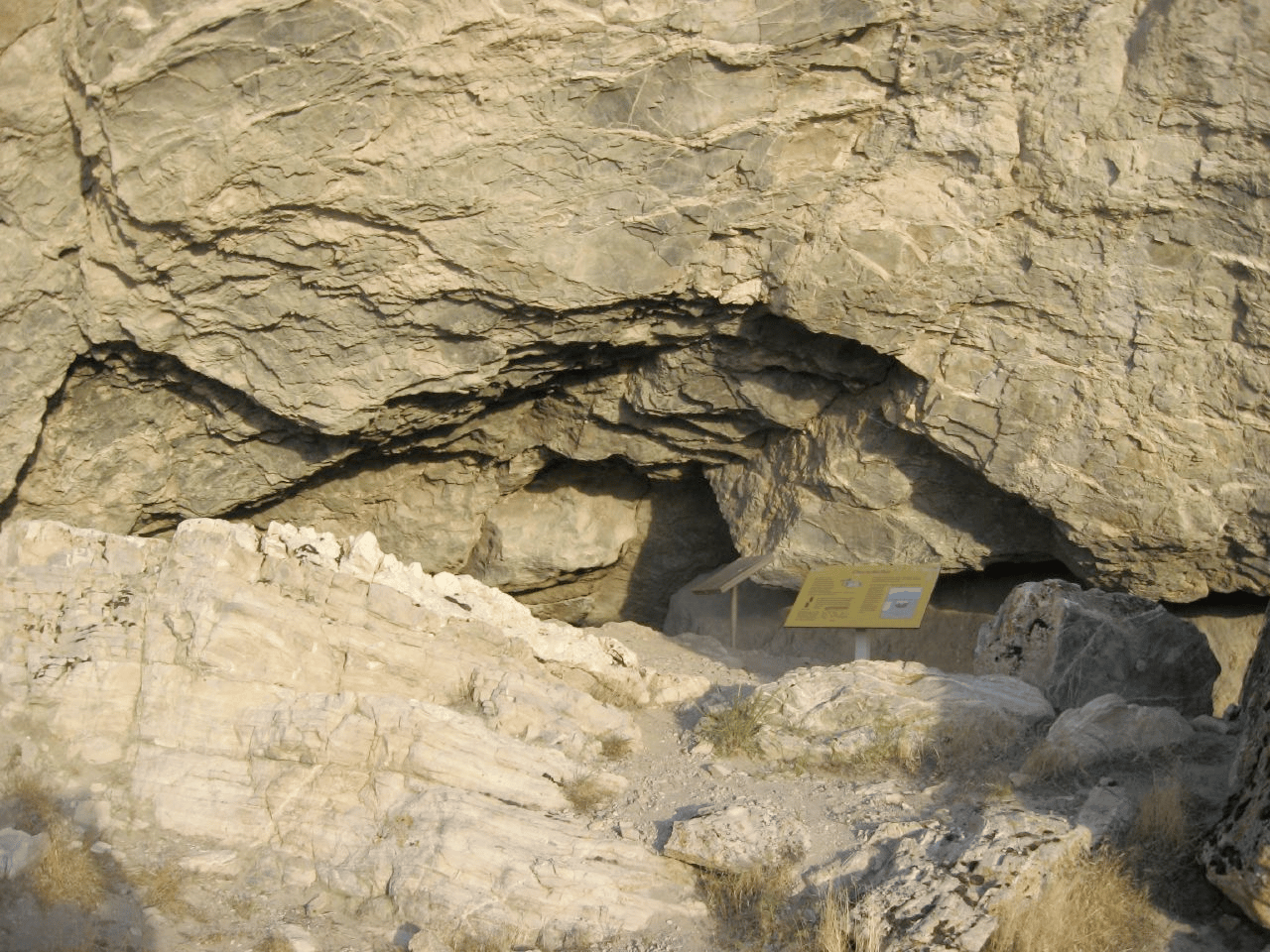
So far we’ve given you charcoal ovens, a castle and an historic state house. Let’s add a cave to the mix. At #7 on our list of the Best Historic Sites In Nevada is Lovelock Cave.
Lovelock Cave is a prehistoric archaeological site located in Lovelock, Nevada. The cave was initially discovered in 1911 by a guano miner named S.M. Leavitt, who found the remains of ancient humans and animals.
The cave was excavated by the University of California, Berkeley in the 1920s, and the artifacts and remains discovered there provided valuable insights into the lives of the ancient people who lived in the area.
The cave is believed to have been used by the Paiute people for thousands of years, with evidence of human habitation dating back as far as 4,000 years.
The artifacts discovered in the cave include a wide variety of items such as baskets, tools, and jewelry made from shells, and remains of animals such as bison, which were an important source of food for the ancient inhabitants.
The cave also contained remains of the so-called “Lovelock Giants”, a group of prehistoric people who were taller than the average height of the present-day population, which sparked a lot of interest and debate among anthropologists and historians.
Things To Do In Lovelock Cave
Here are some activities that can be done at Lovelock Cave:
- Cave exploration and hiking
- Archaeological research and study
- Photography
- History and cultural tours
- Wildlife observation
- Picnicking and camping (nearby)
There’s also Lovelock Cave Days which was an educational event hosted by the Winnemucca Bureau of Land Management, aimed at local school children.
It provided learning opportunities in the areas of Native American history, Western Emigrant history, and geology of the Great Basin region.
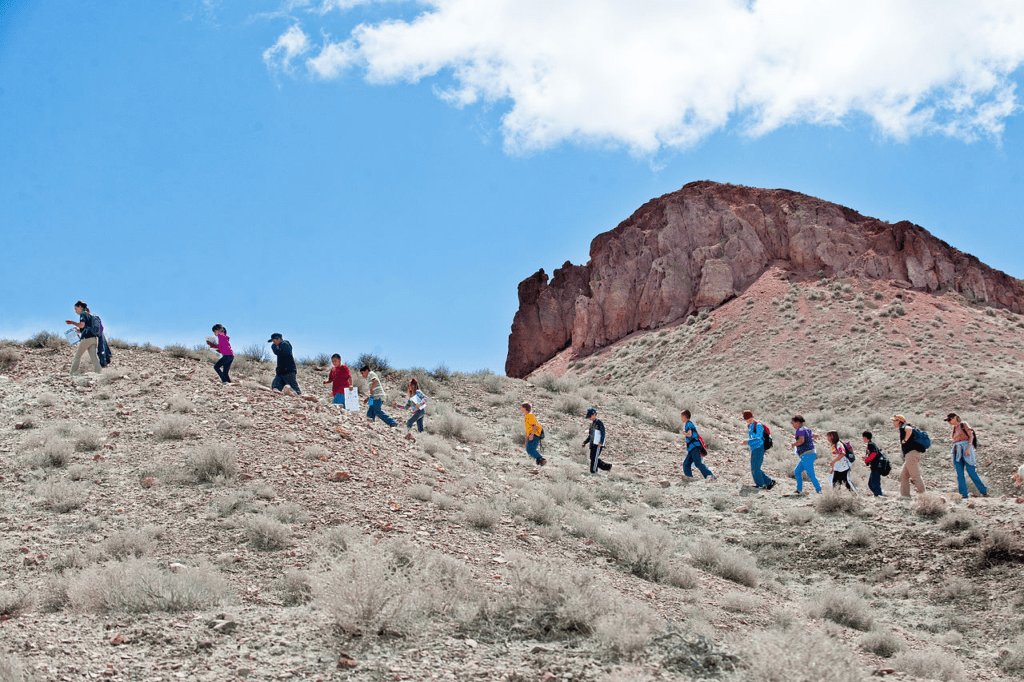
6. Virginia City Historic District
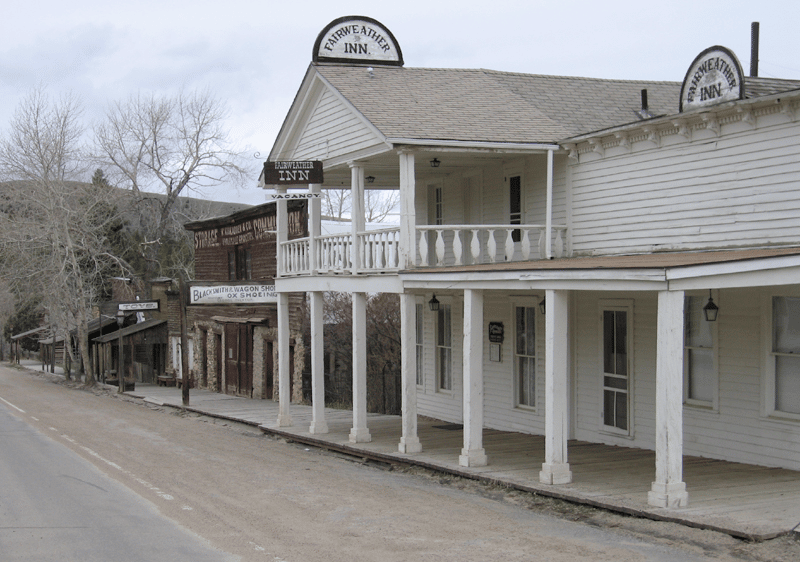
Our next historic site is a remarkable collection of over 400 buildings – most dating from the 19th-century, abandoned mine shafts and adits (horizontal entrances to mines), and historic roads and streets.
At #6 on our list of the Best Historic Sites In Nevada is the Virginia City Historic District.
The area was the site of a major silver and gold strike in 1859, which was the first significant silver strike in the United States and one of the wealthiest in the country’s history.
This led to the development of the towns as a classic frontier mining boom town in the American West during the period between 1860 and 1880.
Take A Virginia City Historic District Tour
The Virginia City Historic District offers various tours for visitors to learn about the history and culture of the mining towns. Some popular tours include:
- The Bucket of Blood Saloon Tour: This tour takes visitors through one of the oldest saloons in the area, where they can learn about the history of the saloon and the mining industry in the area.
- The Ghost Walk: This tour takes visitors through the streets of Virginia City at night, where they can learn about the ghost stories and legends associated with the mining town.
- The Mark Twain Tour: This tour takes visitors through the home of Mark Twain, who lived in Virginia City for a period of time and wrote about his experiences in the mining town.
- The Mine Tour: This tour takes visitors deep into the mines where they can learn about the mining process, see the equipment used, and hear stories from the miners who worked there.
- The Comstock History Tour: This tour gives a comprehensive view of the history of the Comstock Lode, the mines, the people and the events that shaped the towns of Virginia City, Gold Hill and Silver City, Dayton.
- The Trolley Tour: This tour takes visitors on a trolley ride through the streets of Virginia City, where they can learn about the history of the town and see the historic buildings and landmarks.

Top 5 Historic Sites In Nevada
5. Historic Tule Springs Fossil Beds National Monument

We’re on to our Top 5 Historic Sites In Nevada. And while we’re More Than Just Parks that doesn’t mean that we’ve forgotten about parks entirely. Three of our remaining five sites happen to be national park sites. Now there is a difference between a “national park” and a “national park site.”
If you’re wondering what that difference is then check out our article: What Is A National Park Really?
At #5 on our list of the Best Historic Sites In Nevada is Tule Springs Fossil Beds National Monument.
Tule Springs Fossil Beds National Monument is located in the Las Vegas Valley of Nevada. The site is dedicated to the preservation and interpretation of the fossils and other paleontological resources found in the area.
It Contains Significant Paleontological Resources
The Tule Springs Fossil Beds have been known to contain significant paleontological resources since the early 20th century, when fossils were first discovered in the area. The site has yielded a wealth of information about the prehistoric fauna and flora of the region, including fossils of mammoths, horses, camels, and giant ground sloths.
In the late 1990s, plans were announced to develop the area surrounding the Tule Springs Fossil Beds into a housing and commercial development. Concerned about the potential impact on the fossils and other resources in the area, a group of scientists and conservationists lobbied for the creation of a national monument to protect the site.
Their efforts were successful, and in 2014, President Barack Obama signed a proclamation designating the Tule Springs Fossil Beds as a national monument. Today, visitors to the monument can explore the area and see exhibits related to the prehistoric animals and plants that once inhabited the region.
The site also hosts various events and programs throughout the year, including guided hikes, lectures, and educational programs for students and families.
The Tule Springs Fossil Beds National Monument is a unique and important site in the history of paleontology and serves as an important educational resource for visitors of all ages.
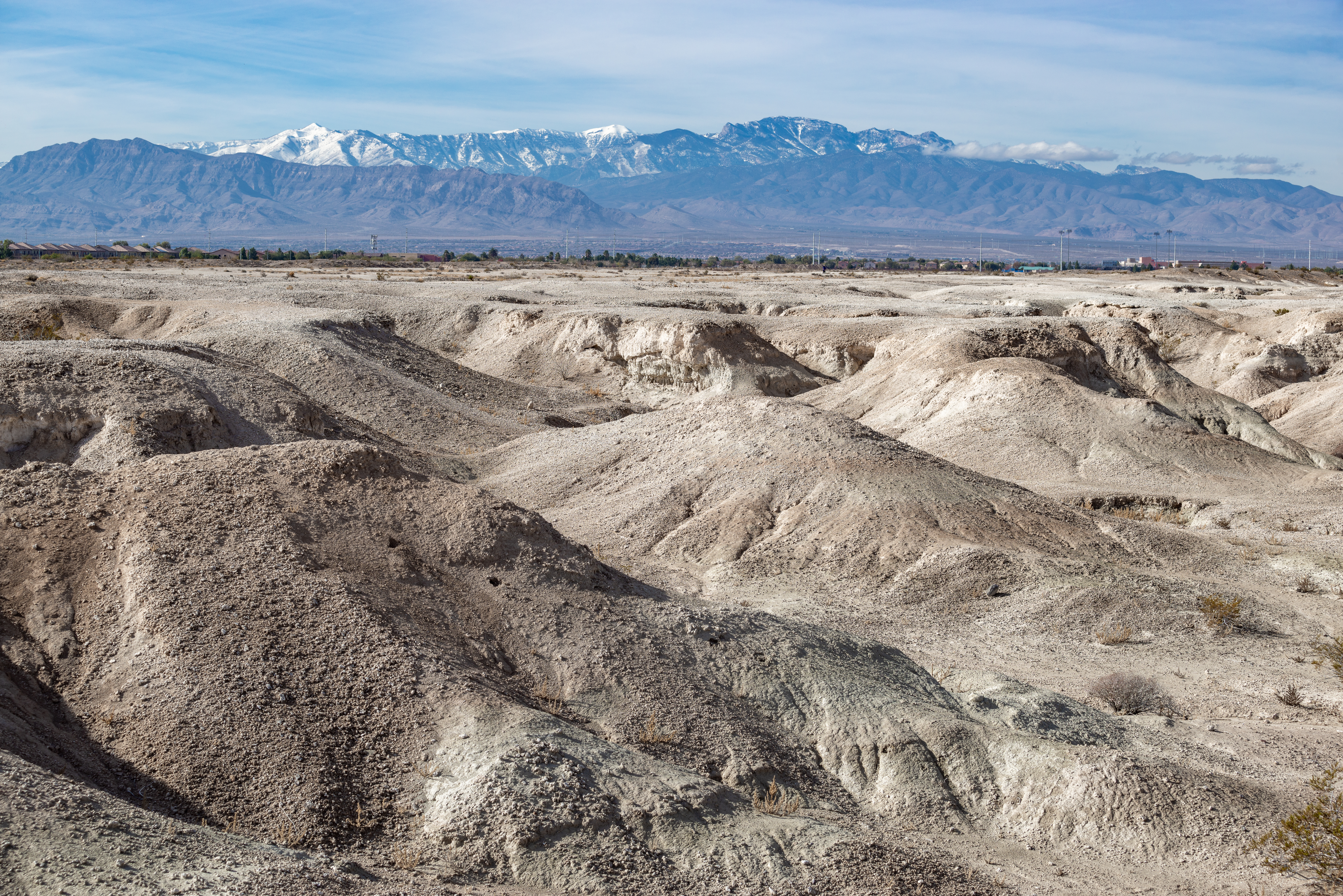
CHECK OUT: 15 MUST-SEE Historic Sites In Arizona
4. Pony Express National Historic Trail
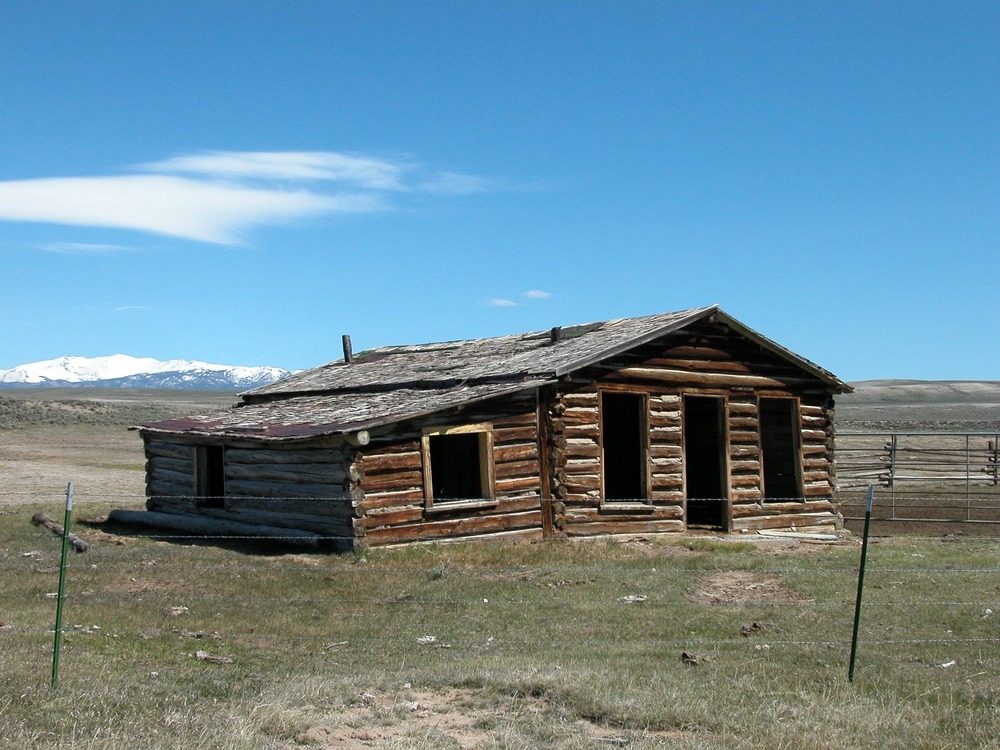
We’re on to our “Final Four.” At #4 we have one of the most famous historic trails in America. Welcome to the Pony Express National Historic Trail.
The Pony Express National Historic Trail is a trail that runs through eight states in the western United States, including Missouri, Kansas, Nebraska, Colorado, Wyoming, Utah, Nevada, and California. It was used by the Pony Express, a mail delivery service that operated from April 1860 to October 1861.
It’s approximately 1,966 miles (3,162 km) long and follows the route of the Pony Express, which was used to deliver mail from St. Joseph, Missouri to Sacramento, California.
The trail passes through some of the most remote and rugged terrain in the West, including the Great Basin Desert and the Rocky Mountains.
The trail is marked with Pony Express stations, many of which have been restored and are open to visitors. Visitors can also see original and replica Pony Express stations, artifacts and exhibits along the trail.
The Trail Offers A Variety Of Educational Opportunities
The trail also offers a variety of recreational activities, such as hiking, horseback riding, and camping.
Visitors can also learn about the history of the Pony Express and the people who worked for the service by visiting museums and interpreting centers along the trail.
It’s worth mentioning that the trail is not a single, continuous route and it’s not possible to follow it end-to-end on foot, horseback or by vehicle. The trail is marked with signs and markers, and visitors can follow specific sections of the trail that are open to the public.
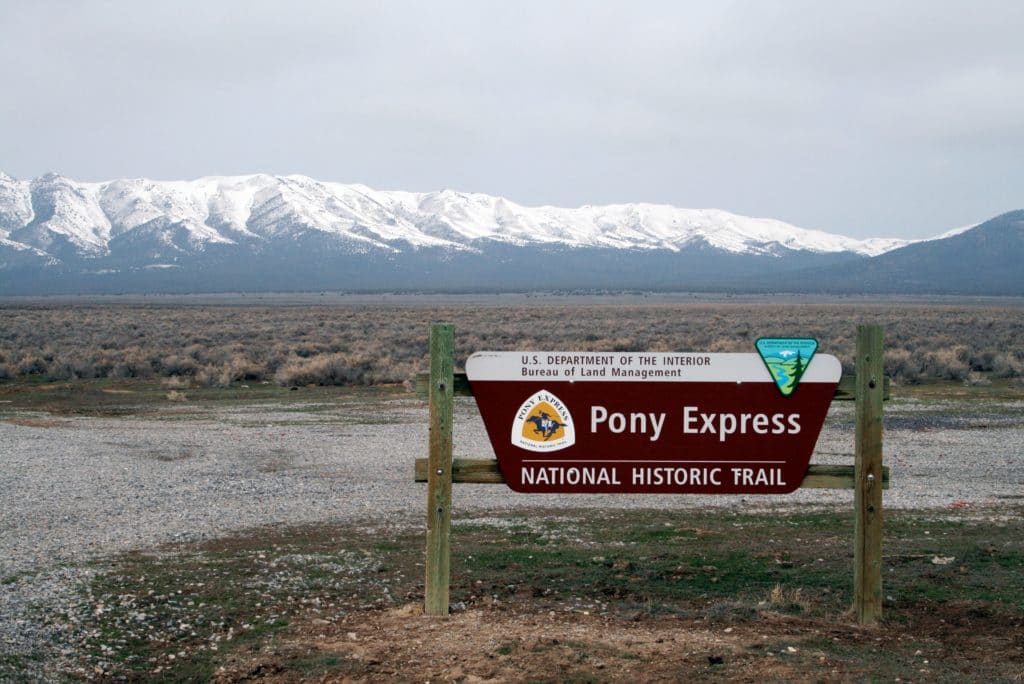
CHECK OUT: 10 MUST-SEE Historic Sites In Oklahoma
3. Atomic Museum
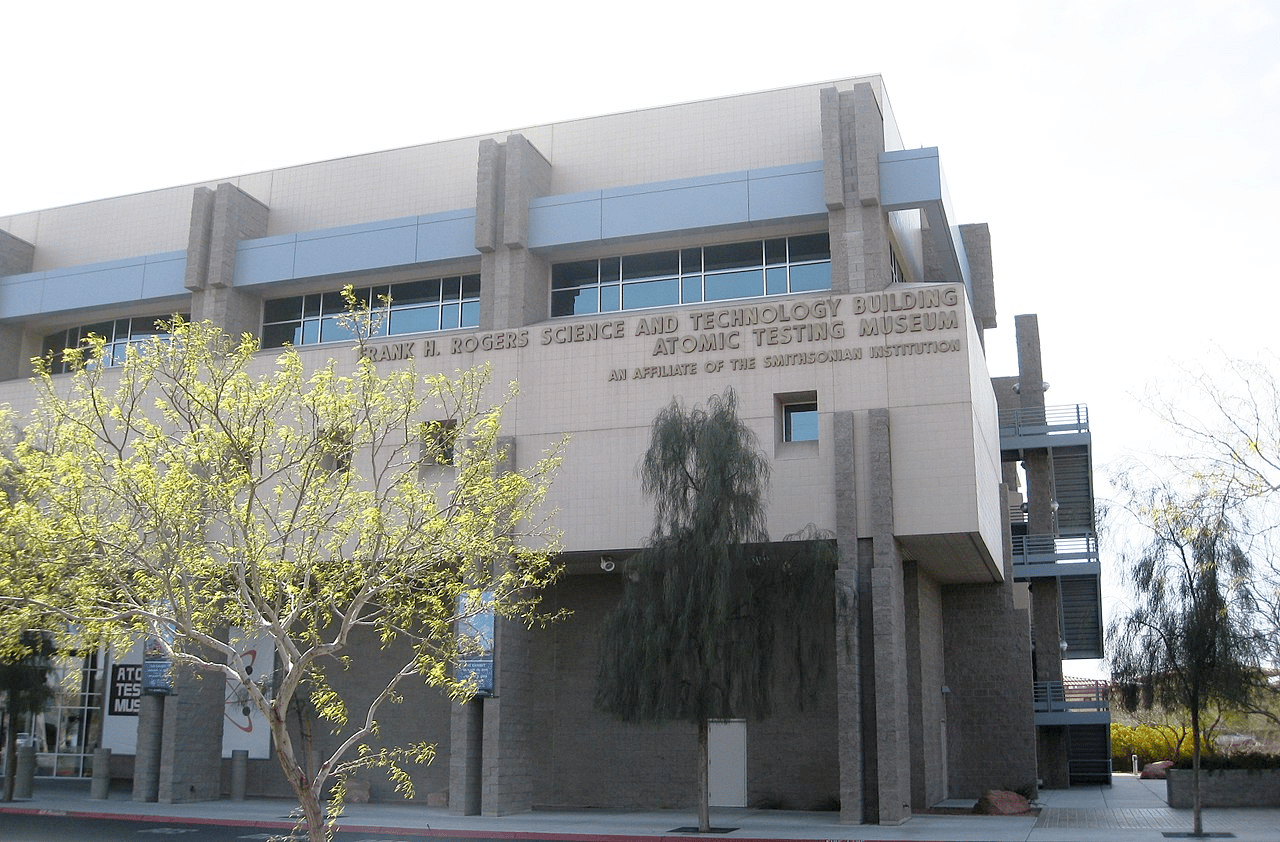
We think that you’re going to have a blast at our next site (pun intended). At #3 on our list of the Best Historic Sites In Nevada is the Atomic Museum.
Atomic Testing In Nevada
The history of atomic testing in Nevada dates back to the early years of the Cold War, when the United States began developing nuclear weapons. In 1951, the U.S. government selected a site in Nevada for its nuclear testing program, which was known as the Nevada Test Site.
The first nuclear test at the Nevada Test Site occurred on January 27, 1951, and was code-named Able. Over the next four decades, the U.S. government conducted over 900 nuclear tests at the site, making it one of the most heavily tested areas in the world. The majority of the tests were atmospheric, which means that they were conducted above ground.
The testing program had several objectives, including the development of more powerful nuclear weapons, the testing of the effects of nuclear weapons on military equipment and structures, and the evaluation of the effects of nuclear weapons on human populations and the environment.
The Tests Had A Significant Impact On The Surrounding Area
The nuclear tests had a significant impact on the surrounding area, as well as on the people who lived there. The radiation from the tests contaminated the soil, water, and air, and caused health problems for many people who were exposed to it.
Public concern over the health effects of the testing program led to increased scrutiny and eventually to a partial ban on atmospheric nuclear testing. In 1992, the U.S. government signed the Comprehensive Nuclear Test Ban Treaty, which prohibited all nuclear testing, including underground testing.
Today, the Nevada Test Site is no longer used for nuclear testing. It has been renamed the Nevada National Security Site and is used for research, training, and other activities related to national security.
The site is also home to several historic nuclear test sites, which are open to the public and provide insight into the history of atomic testing in Nevada.

The National Atomic Testing Museum
The National Atomic Testing Museum is a museum located in Las Vegas, Nevada that documents the history of nuclear testing at the Nevada Test Site, which is located about 65 miles northwest of the city.
The museum is an affiliate of the Smithsonian Institution, and it offers a wide range of exhibits, artifacts, and interactive displays that tell the story of nuclear testing in the United States.
The museum covers the history of the Nevada Test Site, from the first nuclear tests in the 1950s to the present day. Visitors can learn about the science and technology of nuclear testing, as well as the political and social context in which the tests took place.
It also covers the impact of nuclear testing on the environment and the health of the people who lived and worked at the test site.
Learn About The History Of The Cold War
The museum features a number of exhibits, including a replica of an underground nuclear test tunnel, a section of a missile silo, and a replica of a control room used to monitor nuclear tests.
The museum also has a collection of artifacts and photographs that document the history of nuclear testing at the Nevada Test Site.
Visitors can also learn about the Cold War, the development of atomic weapons, the arms race, and the impact of nuclear testing on the environment and people’s health.
The museum also features a number of interactive displays and educational programs that are designed to engage visitors and help them understand the history and science of nuclear testing.

CHECK OUT: 15 MUST-SEE Historic Sites In New Mexico
2. Hoover Dam
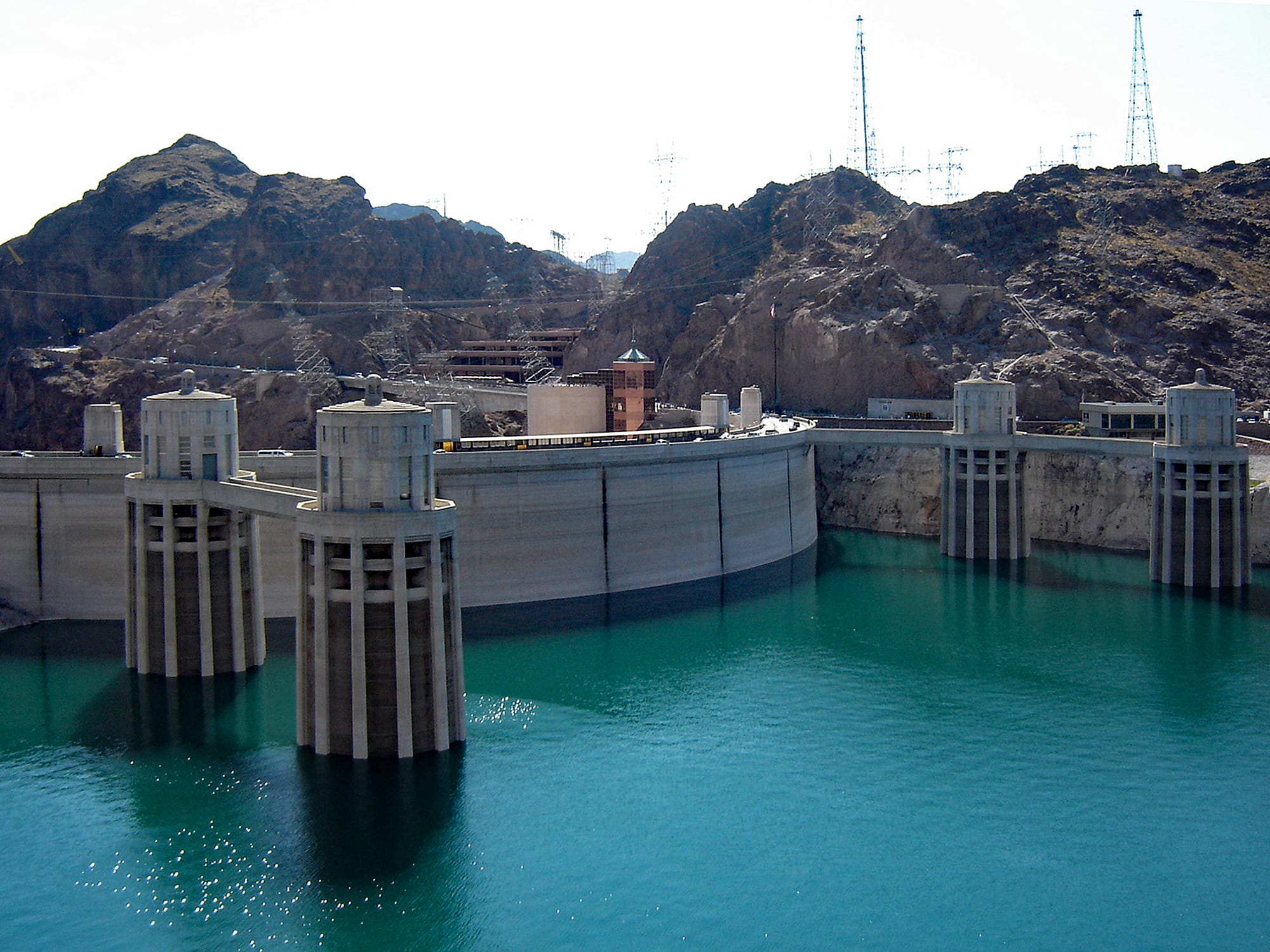
We’re down to our final two historic sites. In the runner-up position at #2 is one of the most popular tourist attractions in the state. It’s Hoover Dam.
It was constructed between 1931 and 1936 during the Great Depression. It was dedicated on September 30, 1935, by President Franklin D. Roosevelt.
Its construction was the result of a massive effort involving thousands of workers, and cost over one hundred lives.
The largest dam in the world at the time of its completion in 1935, this National Historic Landmark stores enough water in Lake Mead to irrigate 2 million acres and serves as a popular tourist destination.
A Short History Of The Hoover Dam
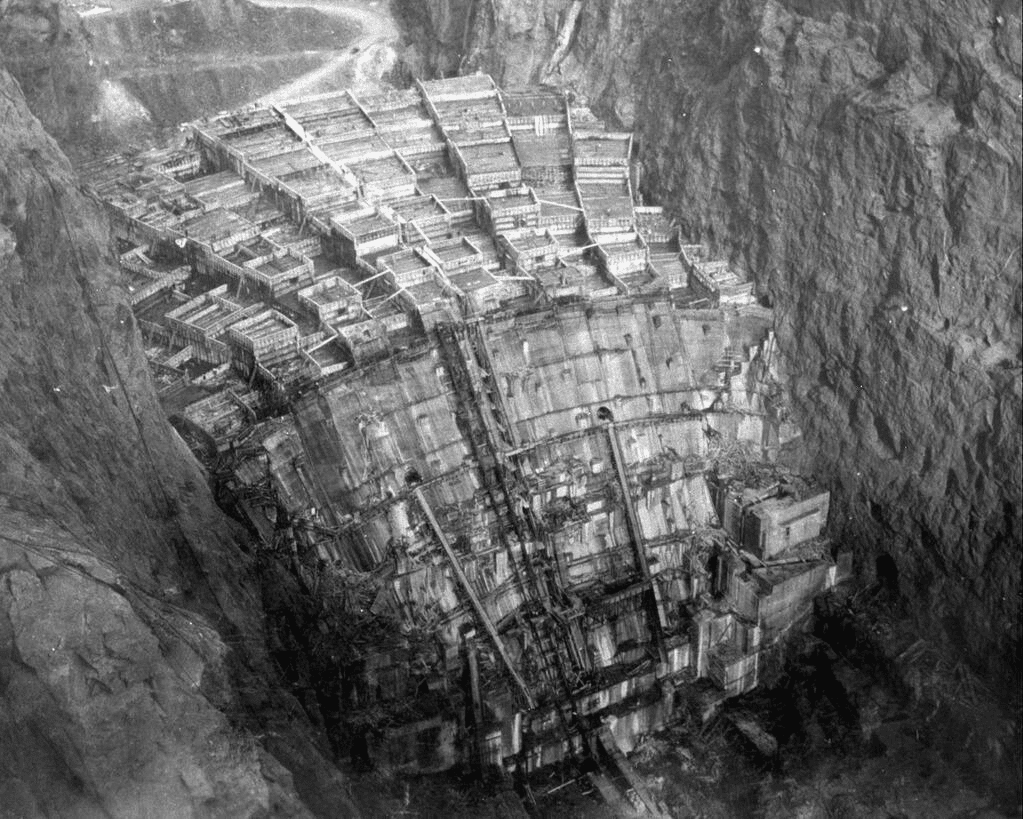
Originally named the Boulder Canyon Project, after the original proposed site, the dam would not only control flooding and irrigation, it would generate and sell hydroelectric power to recoup its costs.
It was Commerce Secretary Herbert Hoover who negotiated the agreement to divide the water proportionally among seven states.
The first difficult step of construction involved blasting the canyon walls to create four diversion tunnels for the water. Facing strict time deadlines, workers toiled in 140-degree tunnels choked with carbon monoxide and dust, conditions that prompted a six-day strike in August 1931.
The second step of involved the clearing of the walls that would contain the dam. Suspended from heights of up to 800 feet above the canyon floor, high scalers wielded 44-pound jackhammers and metal poles to knock loose material, a treacherous task that resulted in casualties from falling workers, equipment and rocks.
The final block of concrete was poured and topped off at 726 feet above the canyon floor in 1935. On September 30, a crowd of 20,000 people watched President Franklin Roosevelt commemorate the magnificent structure’s completion. (Source: History)
Things To Do At Hoover Dam
Here are some things to do at Hoover Dam:
- Take a guided tour: Visitors can take a guided tour of the Hoover Dam to learn about its history, construction, and operation. There are several tour options available, including the Powerplant Tour, the Dam Tour, and the Hoover Dam Top to Bottom Tour.
- Walk across the dam: Visitors can walk across the top of the Hoover Dam and enjoy stunning views of the Colorado River and surrounding landscape.
- Visit the visitor center and museum: The Hoover Dam visitor center features exhibits and displays related to the dam’s history, engineering, and construction. The museum also features interactive displays and artifacts related to the dam’s impact on the surrounding area.
- Take a scenic helicopter tour: Visitors can take a scenic helicopter tour over Hoover Dam and the surrounding area to get a unique perspective on this engineering marvel.
- Go on a boat tour: Visitors can take a boat tour on the Colorado River to see Hoover Dam from a different angle and learn about the river’s history and ecology.
- Enjoy outdoor recreation: Visitors can enjoy a range of outdoor activities in the surrounding area, including hiking, fishing, and boating.
- Attend events and festivals: Hoover Dam hosts various events and festivals throughout the year, including the annual Hoover Dam Marathon, which attracts runners from around the world.
- Take a scenic drive: Visitors can take a scenic drive along the Lake Mead National Recreation Area and enjoy stunning views of the surrounding landscape and lake.
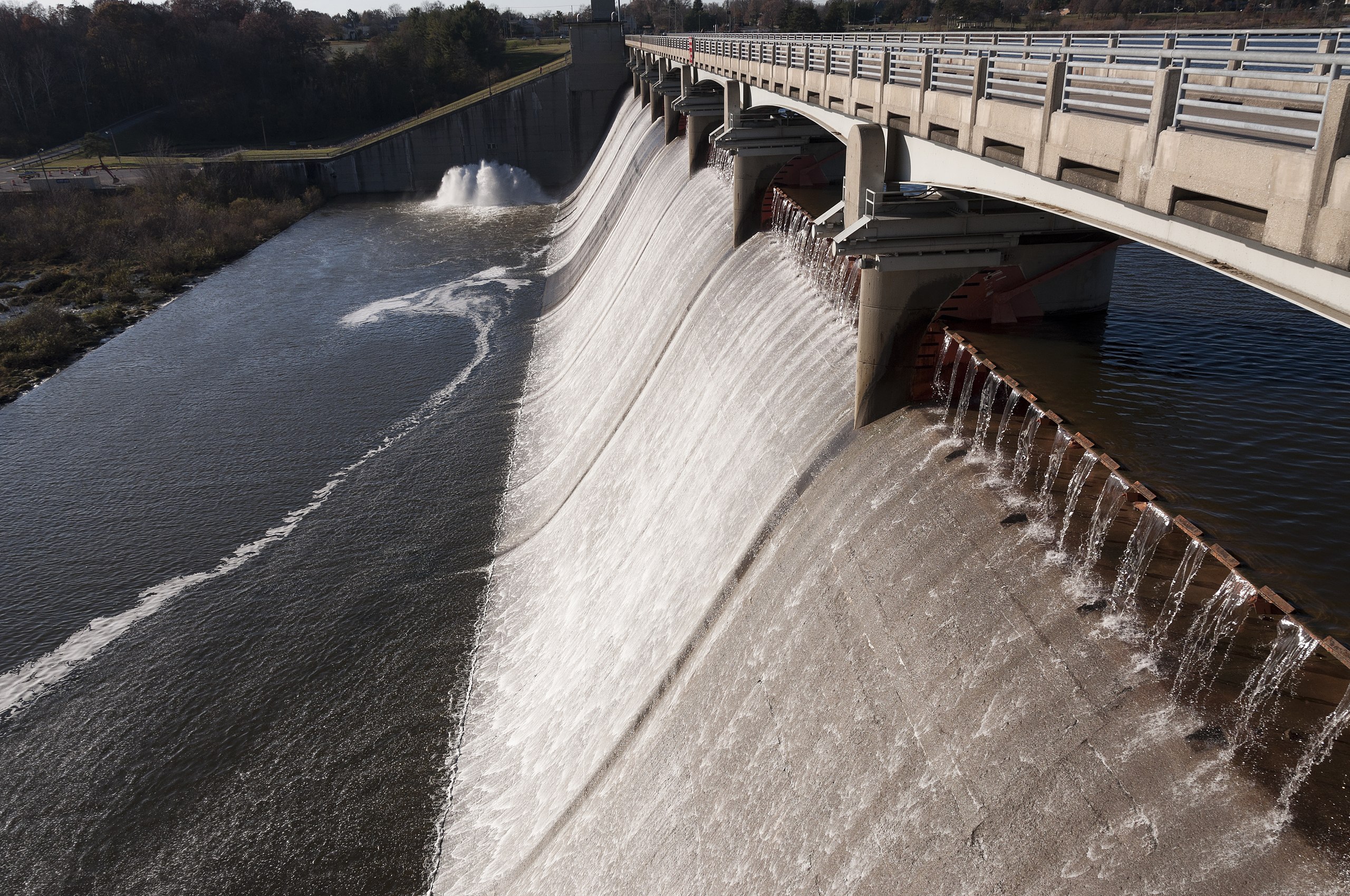
CHECK OUT: 25 Bucket List Famous Landmarks In America (MUST-SEE)
1. Death Valley National Park
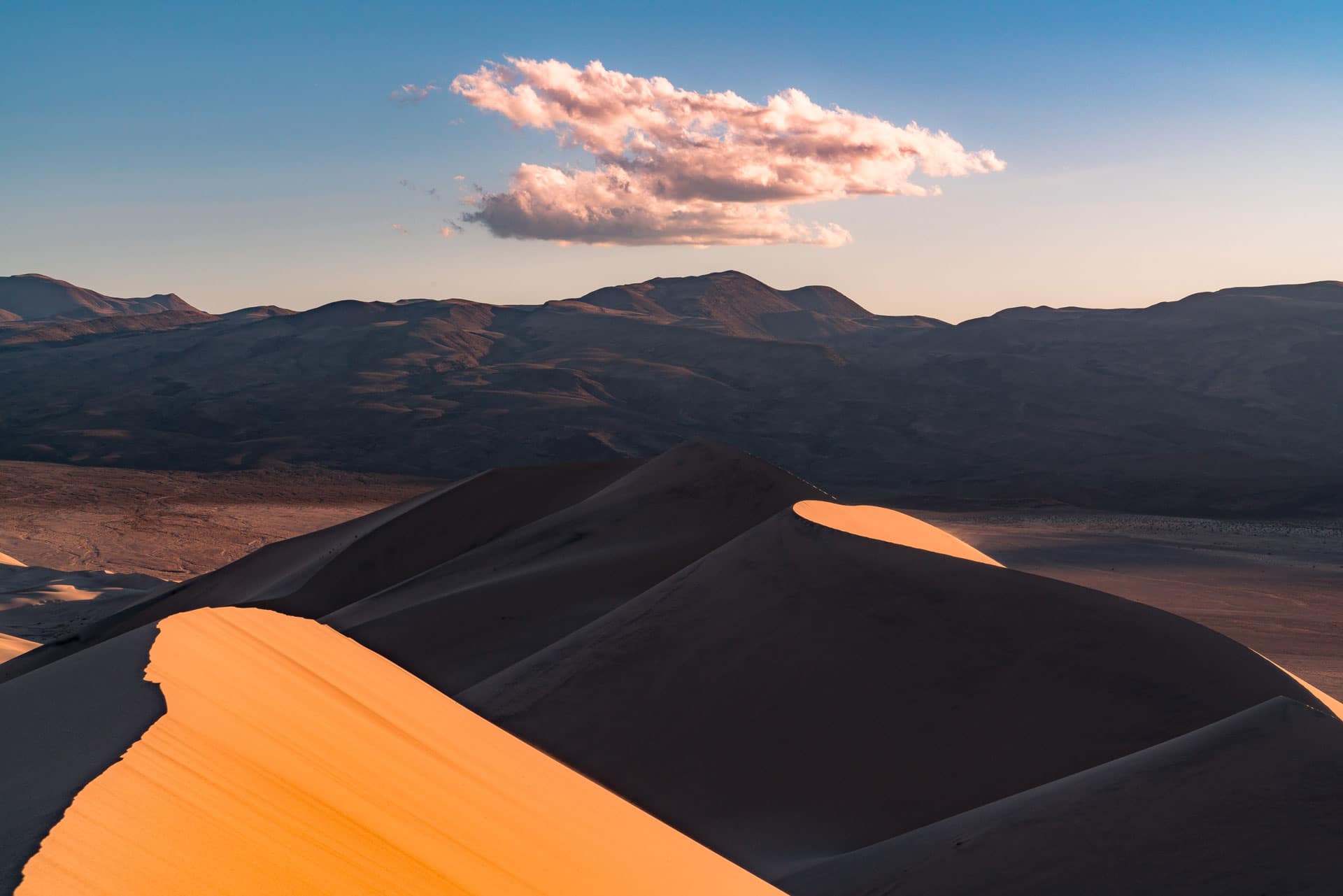
As the #1 Historic Site In Nevada, More Than Just Parks has selected Death Valley National Park.
Death Valley is an otherworldly place that seems like something out of a Star Wars movie set. The landscapes here seem endless with stunning yellow, orange, and purple hues. And, surprisingly, there is abundant life in the last place you might expect.
Situated on California’s southeastern border with Nevada, Death Valley National Park spans over 5,000 square miles of otherworldly vistas. The largest national park in the continental United States, Death Valley is a park for superlatives.
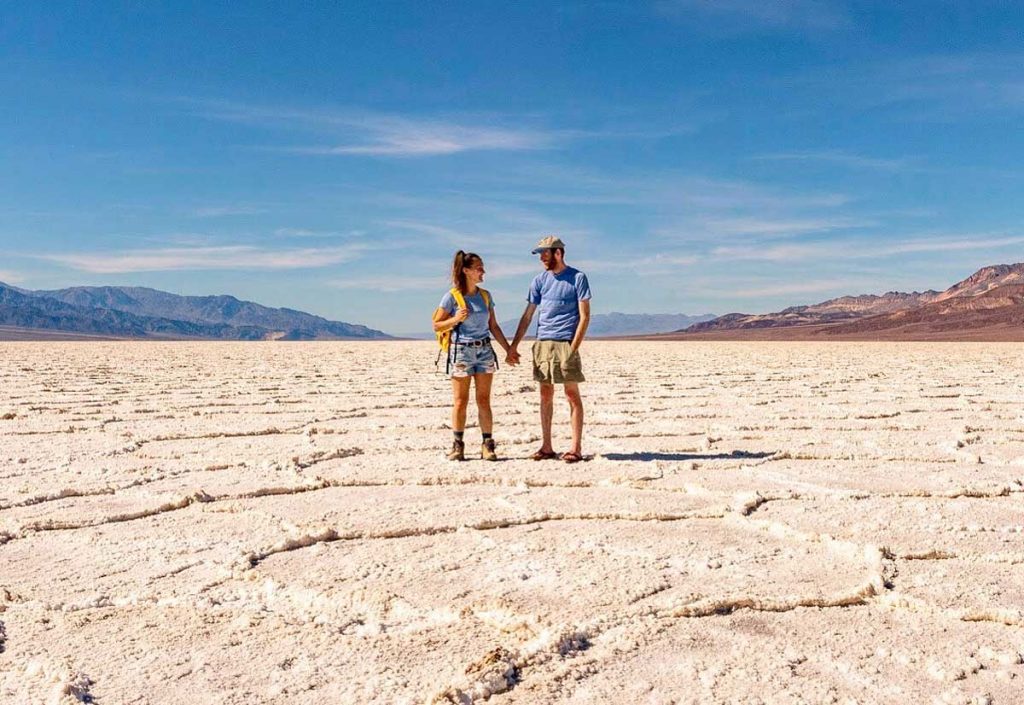
Death Valley is the hottest place on earth, the lowest place in North America, and the driest place in the United States. Death Valley is also the largest National Park outside of Alaska.
CHECK OUT: Death Valley National Park
It’s Got Quite A History
The land that is known today as Death Valley National Park was inhabited by Native Americans (most recently the Timbisha Shoshone around 1000AD) prior to the arrival of Europeans. In the mid 1800s trappers and explorers entered the valley on their way to the gold rush in California.
A wagon train group of 49ers (gold seekers) headed to California got lost and ended up in Death Valley. Things got fairly desperate, so much so that they were forced to kill their own oxen and eat the meat for survival.
Eventually the party did make it out of the valley losing only one person along the way, but that was enough. It’s said that upon leaving the valley one member of the group turned around and said the famous words, “Goodbye, Death Valley” and thus a park was named.
Death Valley Got Its Name From A Group Of Lost Goldminers
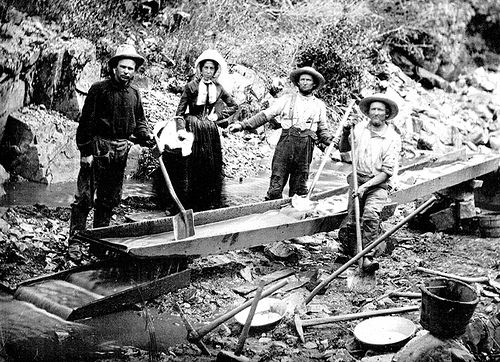
The story of how Death Valley National Park got its name is a particularly fascinating one.
Our story begins with the discovery of gold in the Sacramento Valley of California in early 1848. Once gold was discovered at Sutter’s Mill, pandemonium set in as “gold fever” swept across the nation.
The Bennett-Arcane Party were a group of particularly unlucky prospectors who came from the East. Their destination was the Sutter’s Mill area of Northern California. In those days, folks didn’t have GPS. They made a wrong turn crossing the desert and got trapped in Death Valley.
Hoping To Avoid The Same Fate As The Donner Party
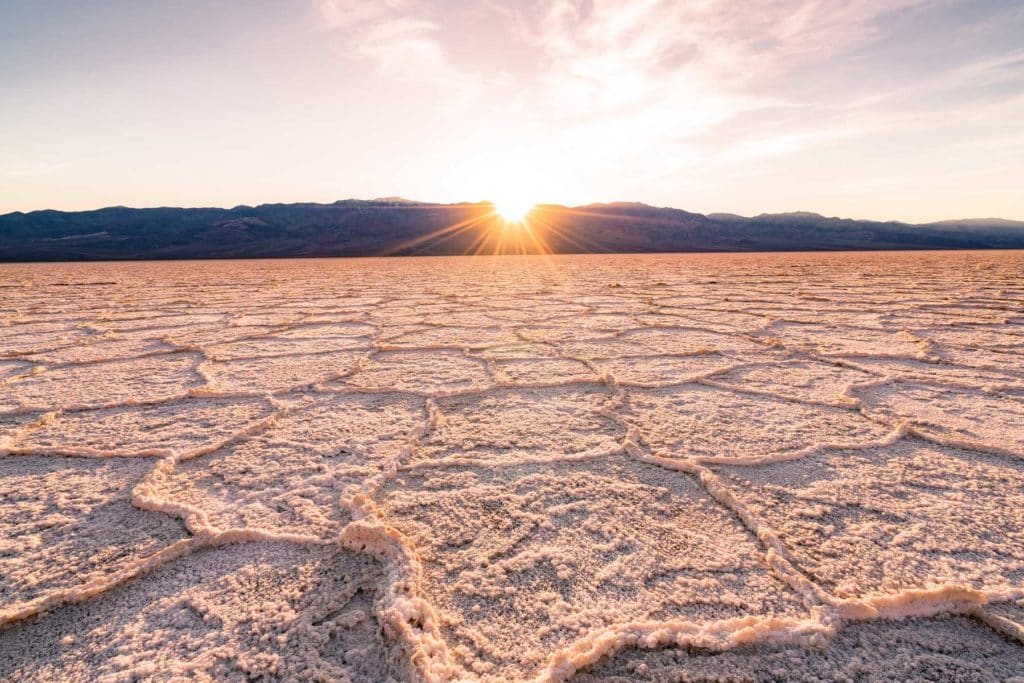
After learning about the infamous Donner Party who had perished on their way to California, this unlucky party took the Old Spanish Trail hoping to avoid the same fate.
Lost and starving, part of the group decided to remain at Travertine Springs while others trekked a grueling 300 miles to the nearest Mission. A month later, they returned with help.
Unfortunately for some of them that help came too late. By the time they arrived, some had already perished in the valley. As one of the more fortunate survivors managed to escape the valley, he supposedly said on his way out, “Goodbye, Death Valley”, and the name stuck.
Establishment of Death Valley National Park
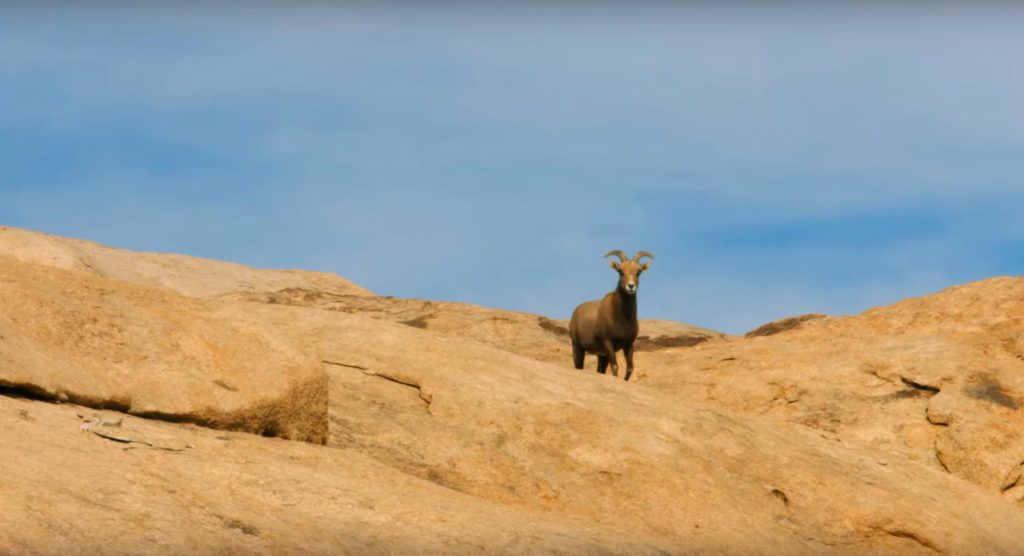
On February 11, 1933 President Hoover set aside two million acres of land mostly in California but a small parcel in Nevada as well to create Death Valley National Monument. In the 1930s under the Roosevelt administration, infrastructure was built in the park by Roosevelt’s CCC program.
Controversy over the mines in Death Valley came about in the 1930s onward as conservationists fought to close them down. Finally, on October 31, 1994 the park was signed into law with an additional 1.3 million acres.
If you’re interested in learning more about the history of Death Valley I recommend this excellent book.
Things To Do At Death Valley
Here are some things to do at Death Valley National Park:
- Explore the badlands: The park features a unique landscape of badlands, canyons, and valleys, perfect for exploring on foot or by vehicle. Visitors can hike, bike, or drive through the park’s many trails and scenic routes.
- Visit the dunes: Death Valley is home to several large sand dunes, including the Mesquite Flat Sand Dunes, which offer a unique and surreal landscape for visitors to explore.
- See the salt flats: The park is also home to the famous Badwater Basin, the lowest point in North America and a vast expanse of salt flats that are an otherworldly sight to see.
- Stargaze: Death Valley is known for its clear skies and low light pollution, making it an excellent spot for stargazing. Visitors can attend ranger-led stargazing programs or explore on their own.
- Visit historic sites: The park is home to several historic sites, including the Harmony Borax Works, which was once used to process borax from nearby mines.
- Enjoy outdoor recreation: Visitors can enjoy a range of outdoor activities in the park, including camping, hiking, biking, and rock climbing.
- Attend events and programs: The park hosts various events and programs throughout the year, including ranger-led hikes, talks, and workshops.
- Visit the visitor center: The park’s visitor center features exhibits and displays related to the park’s history, geology, and ecology. Visitors can also pick up maps and information about the park’s many attractions and activities.
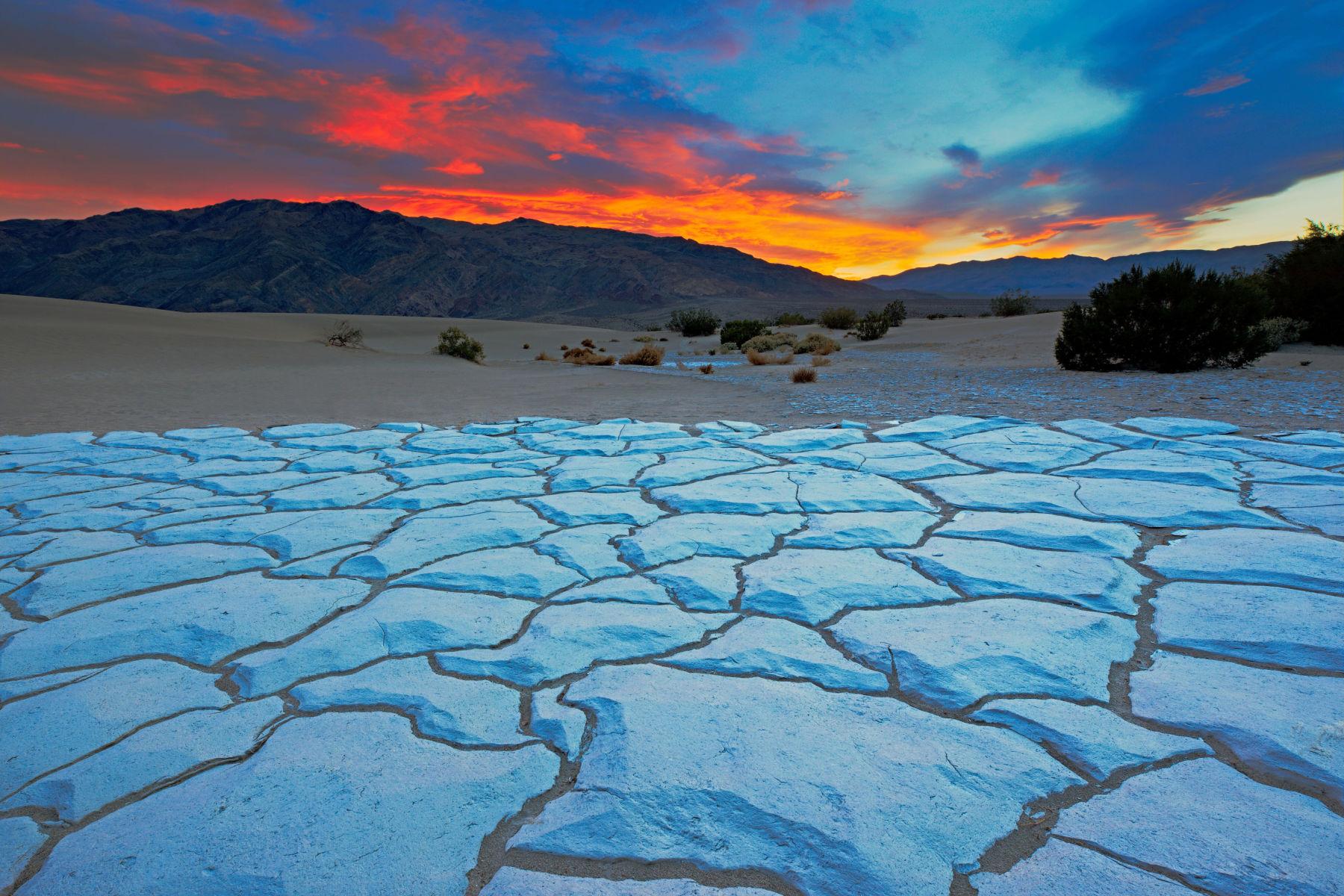
Check Out Our Death Valley Film
In the remote far reaches of the Mojave Desert lies the largest national park in the continental United States. Hidden here in the hottest place on earth is another world full of diverse life and colorful landscapes. Join us as we take life to the extreme and explore Death Valley.
Filmed primarily in 8K. To make this film we spent weeks in California’s (& Nevada’s) Death Valley National Park, mostly in February and March when the temperatures are more manageable.
We traversed hundreds of miles hiking most of the parks trails to capture the park like never before.
As the largest park in the contiguous United States, Death Valley is massive – over 3 million acres! We visited destinations like: Eureka Dunes, The Racetrack Playa, Mesquite Dunes, Zabriskie Point, Charcoal Kilns, Aguereberry Point, Badwater Basin, Darwin Falls, and more.
Check Out National Parks Near Las Vegas
If you’re looking for more adventure then check out our article which features the 9 BEST NATIONAL PARKS NEAR LAS VEGAS.
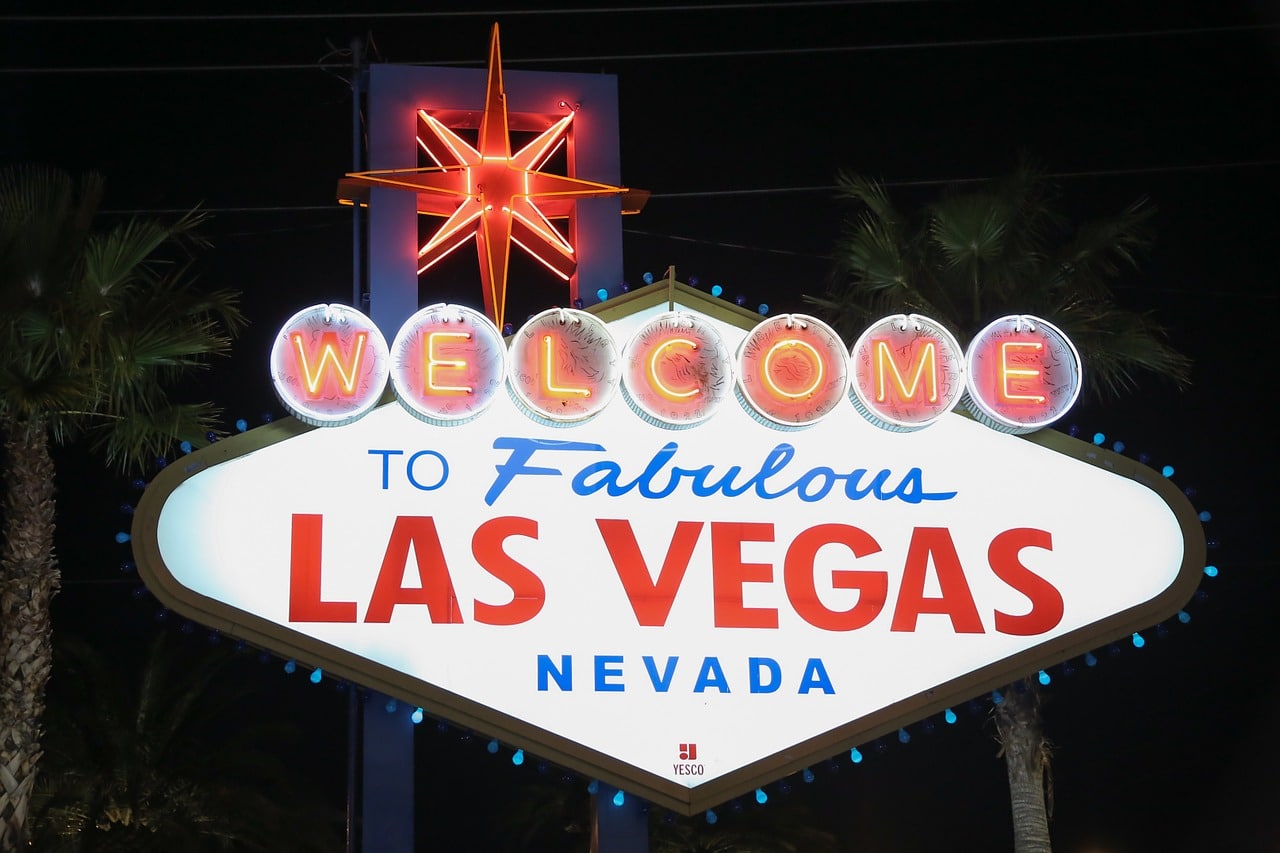
List Of Historic Sites In Nevada
- Death Valley National Park
- Hoover Dam
- Atomic Museum
- Pony Express National Historic Trail
- Tule Springs Fossil Beds National Monument
- Virginia City Historic District
- Lovelock Cave
- Nevada State Capitol
- Stokes Castle
- Ward Charcoal Ovens
Why Trust Us About Historic Sites In Nevada?
We’re Jim Pattiz and Will Pattiz, collectively known as the Pattiz Brothers and we absolutely LOVE the national parks.
You should probably know that we don’t just make this stuff up out of thin air. We’ve spent our entire adult lives exploring and filming America’s national parks and public lands.
We’ve worked with the National Park Service, the Department of Interior, USDA, U.S. Forest Service, and more for years creating films on important places and issues. Our work has been featured in leading publications all over the world and even some people outside of our immediate family call us experts on the national parks.
And, in 2018, our father – having spent a lifetime teaching history – joined us so that he could help us to tell the stories behind these amazing places.
Meet The Parks Brothers
We Hope You’ll Follow Our Journey

Our goal here at More Than Just Parks is to share the beauty of America’s national parks and public lands through stunning short films in an effort to get Americans and the world to see the true value in land conservation.
We hope you’ll follow our journey through the parks and help us to keep them the incredible places that they are. If you’re interested joining the adventure, sign up below!
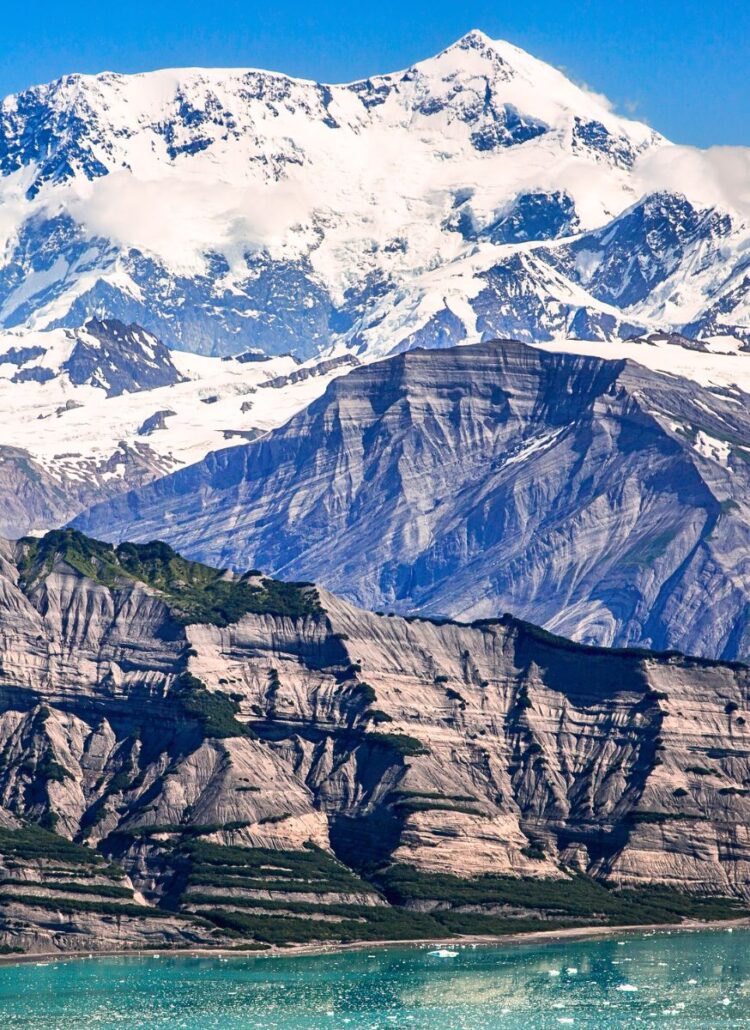
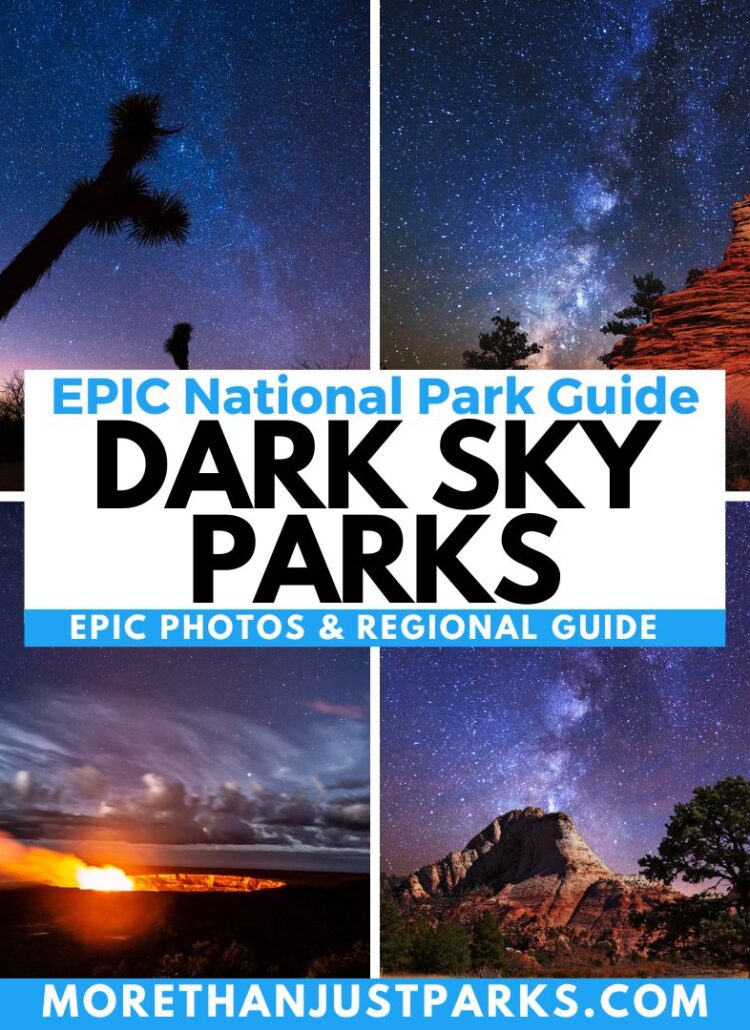
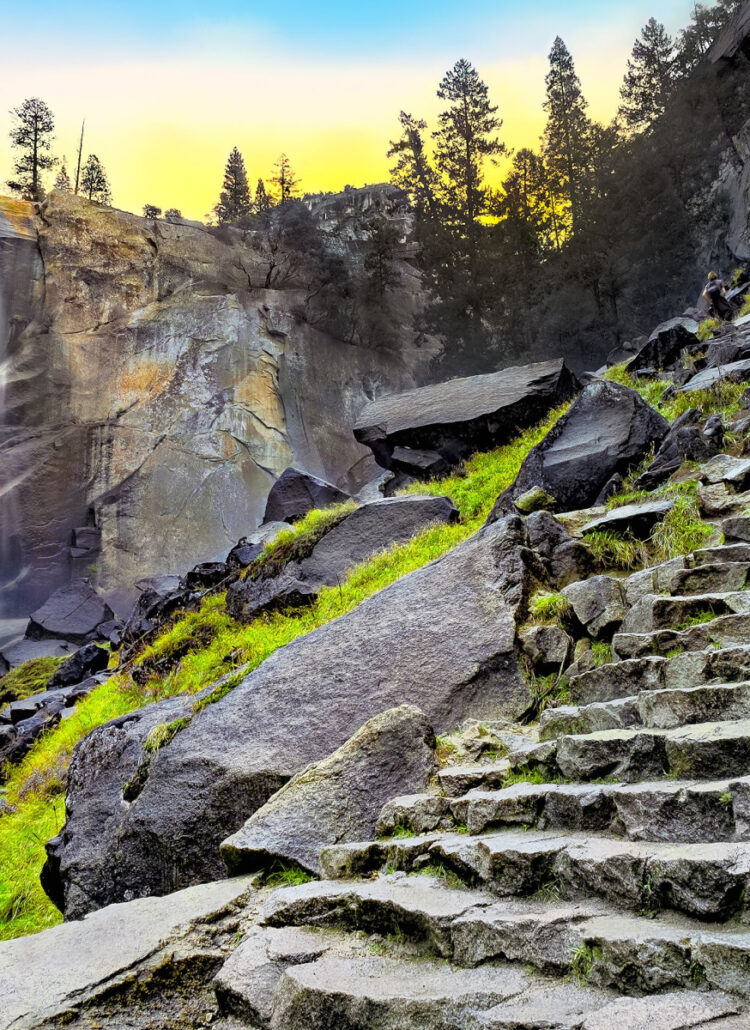
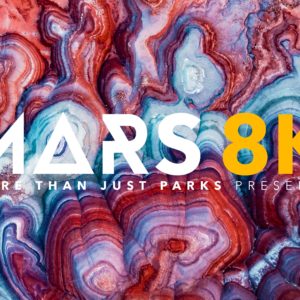

Leave a Reply